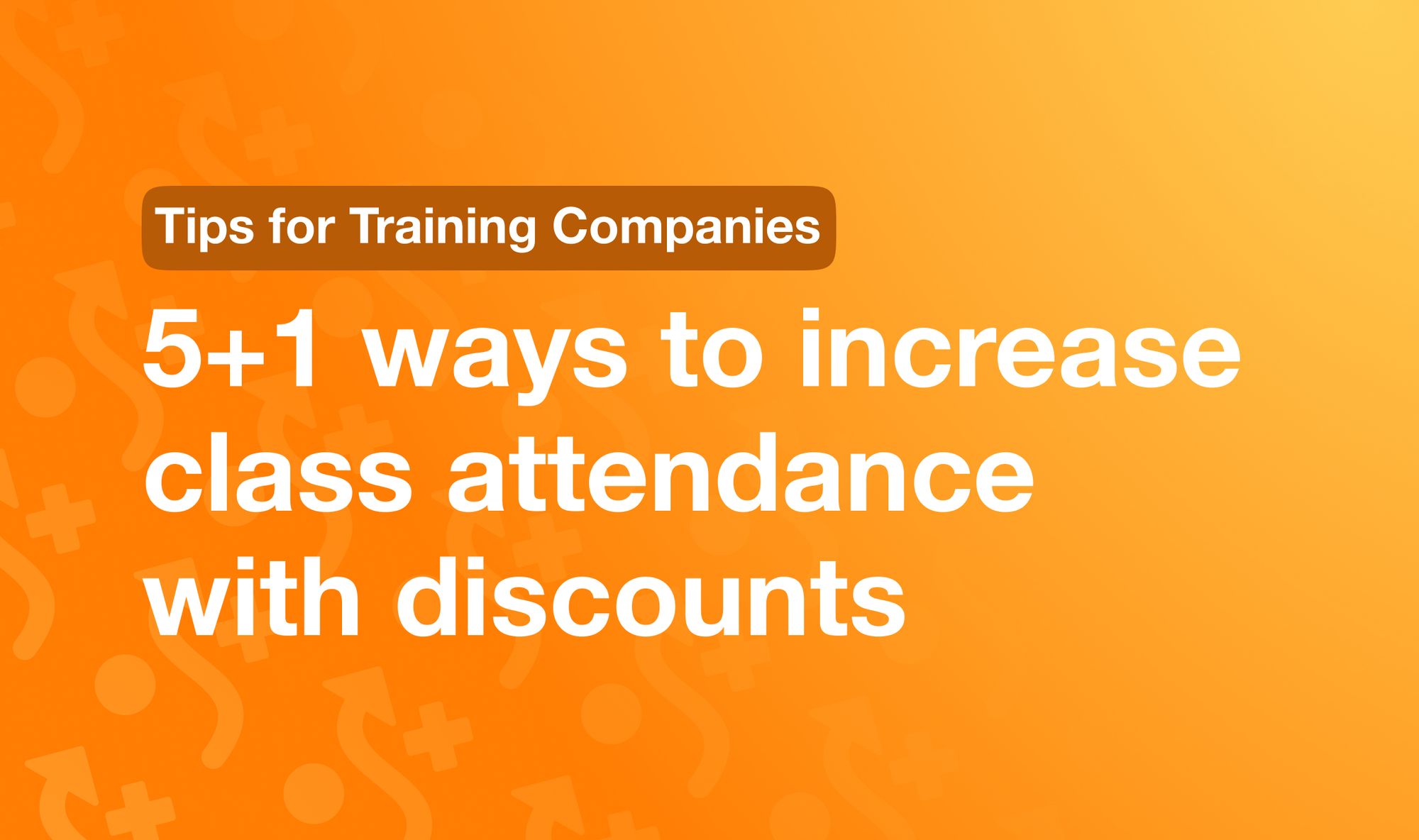For the last few days, I've been interviewing training companies on their sales and training management practices. Of course, the process is far from over, but I've decided to summarize the most interesting findings of one instrument which may help you to increase sales - discounts.
Many thanks to Wolf-Gideon Bleek, Hualberto Aguirre, Limor Halfon and Sarah Rose for accepting my invitation for the interview! Without you, this article won't appear.
While running classes, training companies face two confrontational challenges. On the one hand, it's essential to make events profitable. And not just profitable - they should cross some predefined profitability margin. After all, it's a business, not a charity.
On the other hand, the companies cannot cancel too many non-profitable events (read, lacking attendance) as it could damage their reputation. If potential clients lose confidence that they get their training at the chosen date, they switch to another training provider.
Discounts are a powerful tool. Applied correctly, they can save a class and bring enough attendees to make it happen. There is no doubt - the usage of discounts decreases a profitability margin. At the same time, all companies I interviewed have one thing in common: they prefer to run a class without a profit or even lose money from time to time than to cancel.
Below you will find five ways how to use discounts and bring enough attendees to run a class.
1. Early Bird
Commit and buy a ticket 30 days before and get a discount.
It's the most frequently used practice. If you've never heard of it, there is a high chance you have just come out of a coma and missed all excitement of the last year 😉.
The period before the early bird tickets end is usually 30 days. Rare companies increase it to 45 days for offline events. However, others decrease it to 15 days for online workshops.
This type of tickets is a proven way to create confidence that a training event takes place. Most tools support it, and you won't have troubles configuring it.
To increase the effectiveness of Early Bird, combine it with a sale promotion 3-5 days before the Early Bird ends. It creates an urgency motivating people to make decisions faster.
2. Group Discount
Come as a group (at least 3 participants) and get a 10%/20%/30% discount on a purchase. The size for a group discount usually varies between 10% and 20%.
In most cases, the Group Discount is applied at once during the initial order, either on the registration page via a different ticket type or a sale request by email.
Combining it with the Early Bird gives you the luxury of having several participants booked well before the event starts.
Most tools support Group Discounts, making it easy to use.
3. Friend / Colleague Discount
Bring your friend or colleague to the class with you, and both of you get a discount.
Though being similar to the Group Discount, its usage is different.
- It doesn't have a minimum number of participants. Persuaded only one friend? That's okay with us.
- It is usually applied after the initial purchase as people can convince their colleagues to come after they already registered for your workshop.
An excellent place to talk about the discount is a class description, better in a bold font. It makes participants think about whom they may come with before they finish the registration.
Another good place is a welcome email you send to participants after the registration. Or in a separate email sent the next day after the registration, while their memory is still fresh and they are all excited about the upcoming class.
There is an alternative way to formulate this offer, "Buy a ticket and get a 30% discount code for your friend". I don't have any information on which of these two approaches work better. I recommend experimenting with them to see which works best for your audience.
4. Referral
Recommend us to your friends/colleague, and get a 10% off for the next class after their purchase.
Many businesses like Dropbox and Airbnb thrive thanks to their successful referral programs. Why not you?
The referrals for training businesses may be difficult to track, as there is no good solution on the market yet. Most companies do it manually. Here is a step-by-step guide on how to handle referrals without spending too much time.
Say Alex Bright participated in a Scrum Master training on May 2, 2021. Now you want to give him a referral code.
- Modify your registration forms to accept referral codes
- Use one format for all referral codes, encoding identification information about the referrer into the code. The referral code for Alex could be ab_sm_210502
- ab for Alex Bright
- scm for Scrum Master training
- 210502 for May 2, 2021.
- Give the code to Alex to share with his friends and colleagues
- As soon as someone registers using the referral code, you can quickly identify Alex and create a one-time discount code for him
5. Second Training Discount
Participated in one of our classes? Get a 15% discount for your next workshop.
Repeat sales make businesses successful because repeat sales mean loyal customers. It starts with a great class experience and is followed by a friendly invitation to come again for a smaller price.
This type of discount is especially effective when you offer a range of classes and support a student's journey on their way to the top.
The only downside of the discount is the complexity of managing it, as there is no tool with excellent support for it. You can use MailChimp to generate and send codes. Still, there is no way you can automatically validate during the registration if the user of the code participated in one of your classes.
Alternatively, you can apply the algorithm described for Referrals. It's again manual work, but there is no easy way to avoid it altogether.
6. Mix them up
To move to the next level, start mixing all the above discounts up.
If you look closely, you find that your company can offer them at a different stage of the attendee's journey.
- Early Bird: long before class
- Group Discount: long before class, before class
- Friend Discount: before class, after registration
- Referral: after class
- Second Training Discount: after class
Combine them, experiment and bring as many attendees to each of your classes as needed.
If you work at a training company and open to share how your sales and administrative processes work, contact me at sergey@workshopbutler.com or Twitter.
Enjoyed the article? Follow me on Twitter. I'm going to share more ideas like these in the future.

